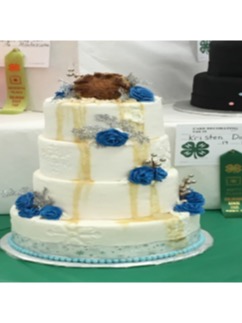State: Fair

Pueblo seems both geographically and temperamentally far from the Front Range. The Muse comments that she'd expected some form of agriculture, but we find only windy weed ranches bisected by willow and cottonwood where rare meandering streams work their way across rocky, unwelcoming ground. This looks like a hard place to be from.
The downtown shows signs of attempts at urban renewal, with fine old brick now interspersed with good-enough more modern construction. A waterway twists its way through an apparently deserted riverwalk as Sunday morning wanes and we find free parking, where a shuttle bus will ferry us out to the fair grounds. Our fellow passengers seem to have little experience riding bus, filling the front first, and not ceding those seats to a stroller-shoving young couple. The ride glides through residential streets past hundred year old brick and stucco construction, some quite grand.
Pueblo was clearly once a small city in a place and a time when towns were more connected by train than car. Life required a certain self-sufficiency, and what today survives with a Walmart and short zoots up the freeway to The Springs, then, thrived on its own account. The merchant class lived in fine brick bungalows along tree-lined streets belying the arid, unforgiving climate, a short walk or shorter trolley ride to the city center, which still sports a proud hotel edifice, several substantial municipal buildings, and a grand old train station, now a museum and "event space" with plans for retail and residential development, like most of the historic train stations left in the West.
This fair seems human-sized from the entrance. A broad-ish promenade disappearing into gaudy signs and food trucks, rodeo arena looming to the right, the dwarfed 4-H building immediately to the left; a mid-fifties brick construction, newly painted deep blue along the deteriorating roof line where a shred of soffit dangles shame-faced, exposing bare wood, as if the building's kimono had inadvertently flapped open in the wind. Inside, the place still exudes hints of the post-war civic pride and optimism that paid for its construction, though the desiccating climate has shriveled the display case casements and dust pervades the atmosphere, leaving the place more resembling a seventy year old in a cub scout uniform than the Eagle scout aerie originally intended. Exhibitors soldier on anyway, showing a few remarkable pieces in what now most resembles one of those consignment shops on the edge of Pueblo's ever-hopeful downtown historical district.
The Muse entered fair 4-H competitions, and she brings the critical eye of each entry judge who ever considered her own work. She recalls the flurry of activity the last few days before those deadlines, projects procrastinated into overwhelming efforts squeezed into that last long night before. I complain that nobody seems to teach color wheel anymore, as quilts and tailored jackets, cakes and cupcakes show the inexplicable preference for spring greens and horrific grays. The pie competition seems a study in failed taxidermy; the sewing, largely examples of off-kilteredness. A few truly fine works shine through, and these garner purple, burgundy, and even a few gold grand champion ribbons, though the distinctions prove untranslatable. Every entry earns some ribbon. Even the cringe-worthy sport a 'qualified for state fair' designation, a most honorable mention, a well-earned E for effort.
©2016 by David A. Schmaltz - all rights reserved


